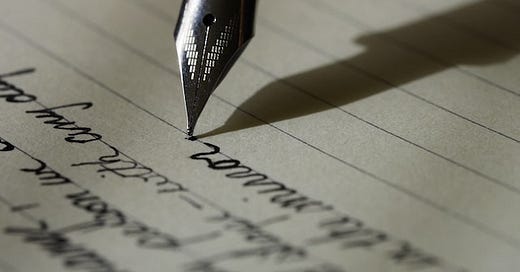What is a Lune?
The lune is a poetic form that was created by the poet Robert Kelly in the 1960s. The American lune is compared to the Japanese haiku because of it's simple 3-line structure but there are important differences. An example is where the haiku has specific rules for structure and themes, the lune has no strict rules.
The lune is a tercet; a three-line poem, of 13 syllables. The structure is simple: 13 syllables, arranged in three lines of 5,3,5 syllables.
The basic structure is simple: 13 syllables*, arranged in three lines of five, three, and five syllables. The line has no rules about the theme and it usually doesn't require a title. It's up to the writer whether the sentences stand alone or run together. There's also no rules about punctuation or capitalization.
The Other Version of the Lune
American poet Jack Collum created an alternative version of Kelly's lune on accident in the 1970s when he was teaching the line in class but he had not remembered his reading of the Kelly lune correctly
Collum created a lune that uses words instead of syllables. So the basic structure would be 5,3,5 words.
The lune Collum created stuck around because words were easier for school children to count rather than counting syllables. Jack Collum did contact Robert Kelly during the late 1970s and ask his permission to continue using the name ‘lune’ for his version.
Kelly agreed to let Collum call his version a line and to distinguish each one there became the Kelly lune and the Collum lune.
Summarizing the Lune
There you have it; the poetic form called a lune has two different versions. Robert Kelly created a 3-line lune using 5,3,5 syllables. Jack Collum created a 3-line lune using 5,3,5 words. Other than those basic structures the lune has no other rules. I personally use the Collum lune when I am writing. Anyone else write lunes and what version do you use?



